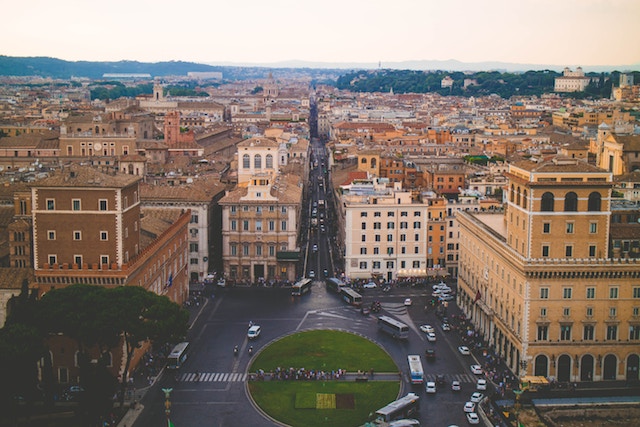Your Guide To Navigating Rome Public Transport


So, you could say I was unprepared. My biggest piece of advice? Be prepared.
Why is this? Because Italy welcomed me with a strike at Florence Airport, which forced me to change tactics even before I left the States. I ended up landing in Pisa and taking a bus to Florence. Which also was a mini-adventure because of the combination of jet lag, general confusion over landing in a city I wasn’t prepared to be in, and practically cuddling with the bus driver because I got the absolute very last seat on the bus. Which was next to the driver.
Italy welcomed me with a strike at Florence Airport, which forced me to change tactics even before I left the States.
Once I was in Florence, I found it to be such a very walkable city, that the few transportation options (the bus only, there’s no Metro) weren’t needed. If I really needed to get somewhere, there were taxis all over the place. Although, in general, I recommend them only as a very last resort. Mostly because the drivers will do everything in their power to rip you off.
Rome is a different story. The center is very walkable. Eith the major tourist attractions almost all being within reach of each other (by this I mean the Colosseum, Trevi Fountain, Pantheon, Spanish Steps and, at a stretch, Piazza del Popolo.) All of these places with the exception of the Pantheon are also direct stops on the Metro, so if you do decide to take the train, you can’t miss them, and the Vatican also is on a direct stop. If you’re lucky, you’ll see small children badly playing musical instruments or adults singing and/or doing magic tricks for money.
Rome has two Metro lines: A and B. If you want to do something like go from the Spanish Steps to the Colosseum and not walk, you’ll have to change trains at the Termini station, which is the only place the A and B lines meet. The city also is currently “working on” a C line, but it isn’t slated to open for at least another three or four years, and if you’re familiar with how time works in Italy, that really means that it won’t be open in another six or seven years.
If you’re lucky, you’ll see small children badly playing musical instruments or adults singing and/or doing magic tricks for money.
The Metro covers the city center pretty well. But, if you want to go outside of it, there’s a lot of ground that isn’t covered, and you’ll have to take a bus. Over the past five months, I’ve gotten very familiar with Rome’s bus system because my job required me to travel all over the city, and it was extremely rare that I would have a student whose house was right off the Metro stop.
Here is my advice about the bus system: Bring a lot of patience with you. The buses run on Italian time. This means you could wait 40 minutes or more for your bus. And if there’s a strike? More than that. I had to wait almost 90 minutes for a bus when there was a strike in June. And don’t be surprised if after waiting 30 minutes or so you see two of the same buses pull up to your stop and, as you hesitate over which one to get into, both drive away.
That being said, the buses cover the city much better than the trains, so they’re more practical to take. And while the ticket costs the same as the Metro (1.50 Euro), the tickets are very rarely checked. So you essentially have a free method of transportation. If you’re on a budget, that’s great news.
Your Guide To Navigating Rome Public Transport.
Another note about the buses: If there’s a transportation strike, which is more common than you think, that usually means the Metro doesn’t run during business hours. If you want to go anywhere, you must take a bus, taxi or walk. So it’s a good idea to learn the system.
Trains stop at 11:30 p.m. most nights and 1:30 a.m. on Fridays and Saturdays. So if you’re headed out for the night, you’ll either have to cut your night short or take one of the 25 night bus lines, which start at midnight and last until the Metro opens again at 5:30 a.m. They come every half hour, or they’re supposed to, so keep that in mind. Most people take either the N1, which follows the A line Metro, or the N2, which follows the B line. (Warning: The N1 can get extremely crowded, to the point that the driver can’t even open the doors. Be pushy getting out.)
As much as I’ve loved living in Rome, the transportation system is one of those things that make you hate the city. It’s horribly inefficient, and it takes a long time to get anywhere. The transportation systems in other cities are better. But, this is Italy. And while it can be extremely frustrating, you learn to weather the delays and become a lot more patient.
And I think these days we could all use more of that.
Photo credit for Navigating Rome Public Transport by Unsplash. Have you traveled to Rome, Italy? Comment below to share your experience! We can’t wait to hear from you.








